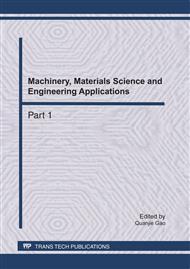p.1051
p.1057
p.1063
p.1070
p.1075
p.1080
p.1085
p.1089
p.1094
New Method Used to Prepare Paraffin Spheres Based on Digitalization of Microfluids Technology
Abstract:
In tissue engineering, paraffin spheres are often used as porogen in solvent casting/particulate leaching technology to prepare scaffold. Shape, size of paraffin spheres is very important to connectivity of scaffold. Emulsification is commonly used to prepare paraffin spheres, in which the paraffin size can not be controlled well. In this paper, a new method based on digitalization of microfluids technology is used to produce paraffin spheres. In this method, relationship between drive voltage U and diameter of spheres, and relationship between diameter of nozzle d and diameter of spheres are studied. The two parameters have great effect on the shape, size of paraffin spheres. The shape, size of paraffin spheres can be adjusted by controlling the drive voltage U and diameter of nozzle d. The results show that the method based on digitalization of microfluids technology is simple, highly controllability.
Info:
Periodical:
Pages:
1075-1079
Citation:
Online since:
April 2011
Authors:
Price:
Сopyright:
© 2011 Trans Tech Publications Ltd. All Rights Reserved
Share:
Citation:


